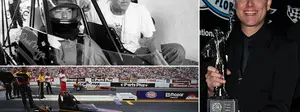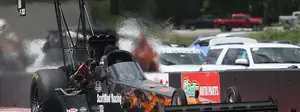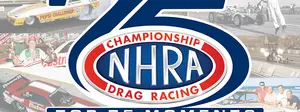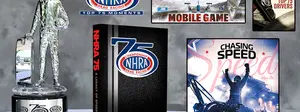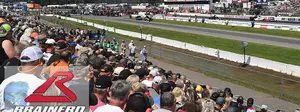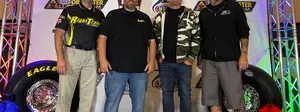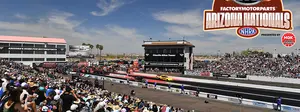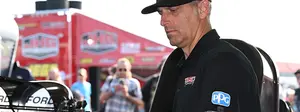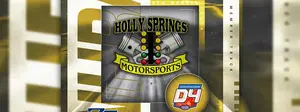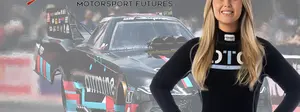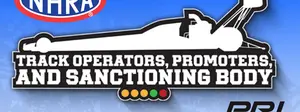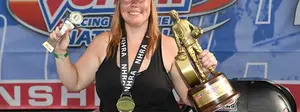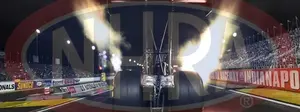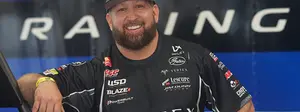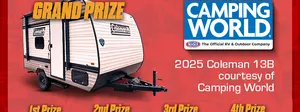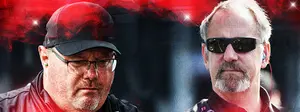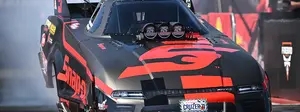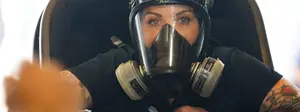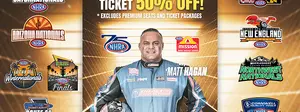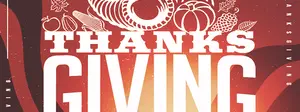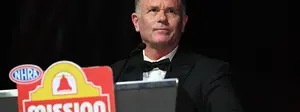

Don Garlits Museum of Drag Racing announces 2023 Hall of Fame inductees
John Force, Shelly Anderson Payne, Ron Attebury, Sonny Messner, Carol “Bunny” Burkett, Graeme Cowin, Vinny and Richard Napp, Bob Frey, and Linda Jones will be the newest inductees into the Don Garlits Museum of Drag Racing’s International Drag Racing Hall of Fame, March 9, 2023.
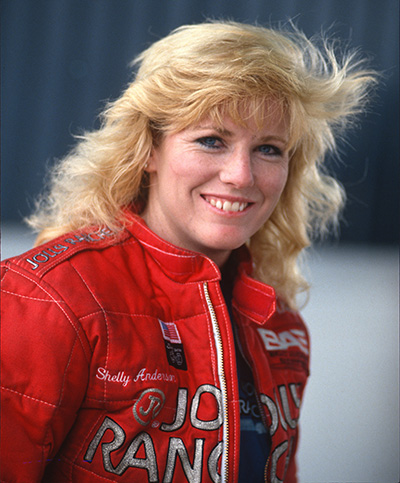
Anderson-Payne, the daughter of IDRHoF member and champion Alcohol Funny Car driver Brad Anderson, grew up in the sport of drag racing. She began as a crew member for her father’s team by cleaning parts and working on the car. She began her driving experience in Alcohol Dragsters, where she won the 1992 Southern Nationals. A few years later, she switched to Top Fuel dragsters, where she not only drove the car but also worked on it. While in Top Fuel she won four national events and set a speed record in 1996 that stood for several years. She continued to be a formative opponent throughout the years. In the early 2000s, she moved into the Pro Mod series, where she continued to be competitive. She suffered two terrible crashes in 2005 but came back in 2006 and had a solid campaign that season. After driving, Shelly went on to ESPN as a drag racing commentator. She stayed involved in the sport by becoming a crew chief as the family continued racing. In 2021, she began cheering on her daughter, Madison, and son Toby Payne as they began their drag racing careers.
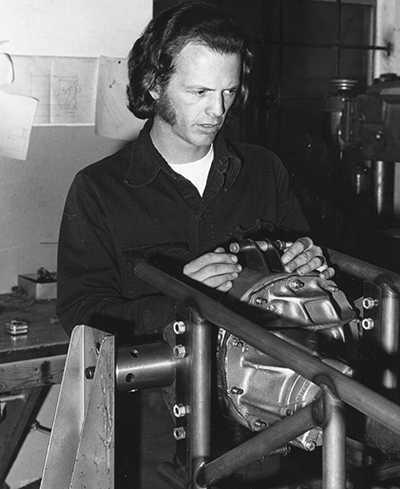
Renowned chassis builder Attebury began his car building at the age of 5, when his mother found him taking body panels off the family tractor. His excuse was he was making the tractor lighter so it would go faster. He built and raced his first car at the age of 20. He and his brother campaigned a front engine Top Gas dragster for two years. In 1973 he won the Bakersfield WCS, the WCS finals at Sears Point, and was named the Most Improved Pro Driver in Division 7. At 24, Attebury had his first paying customer, Frank Bradley. Bradley’s 1976 NHRA Winternationals Top Fuel win kickstarted Attebury’s car building and the demand for an Attebury car was on. All of a sudden, he was building cars for the likes of Gary Beck, James Warren, Roger Coburn, and Dennis Baca. Attebury cars were known for being notoriously safe and he was known for his great attention to detail when building cars. This attention to detail caught the attention of Shirley Muldowney who, in 1976, bought her first Attebury car. She went on to win her first NHRA world championship in that car. Attebury quit car building for a short time and began working for the U.S. Department of Energy but returned to car building and opened Attebury’s Street Rods in Morgan Hill, Calif. He built a long line of hot rods that were featured in magazines and on several magazine covers. In the early 2000s, Attebury was bitten by the driving bug again. He built and raced an A/Fuel dragster on the Nostalgia circuit. He raced his last car, a Gas Modified roadster in Bonneville in 2012.

Burkett passed away in April 2020 after leaving a mark on the sport of drag racing. She began her career in the mid-1960s and from the start she was a huge fan attraction. Her fan base never faded during her career, which was filled with successes. She began racing when her husband Mo bought her a red ’64 Mustang and she won her very first race the day afterward. The bug had bitten, and she dedicated herself to quarter-mile competition. She got her nickname “Bunny” from working briefly as a hostess in a Baltimore Playboy Club. Her racing career path went from being a local racer to becoming a regular on national tours in the United States and Canada. Not only was she a success on the track, she was a strong leader and supporter of her crew. She would promote her crew to others, which led to many of them becoming crew members on Top Fuel teams and some even becoming accomplished drivers themselves. Although Burkett had tons of success, she also had her misfortunes. She had a life-threatening crash in 1995 that nearly ended her racing career. She also had two subsequent battles with cancer, but these misfortunes did not defeat her, and she continued racing until 2015. Among her major achievements during her career are:1986 IHRA Top Alcohol Funny Car Championship, 1986 NHRA Keystone Nationals Top Alcohol national event win, and the 1986 NHRA Division 2 Top Alcohol Funny Car championship.
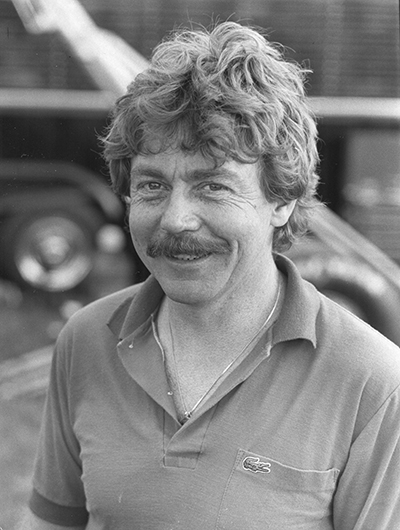
Cowin is considered a pioneer in Australian drag racing. Cowin was a trucker with a need for speed who began his racing career in 1973 when he and his wife invested everything they had and purchased the famed Psycho nitro-fueled drag car. This led to Cowin moving into nitro Funny Car and Top Fuel racing in Australia and the U.S. While primarily a Top Fuel driver in Australia, he campaigned Funny Cars while in the U.S. and finished as runner-up at the 1987 NHRA Winternationals. In 1993, driving a Top Fuel dragster, Cowin was the first in Australia to run under five seconds with a pass of 4.895. In 1995 he won the Australian Top Fuel championship. In 2013, he created the Outlaw Nitro Funny Car Series, which became a huge success, bringing racers from across Australia and New Zealand together. He was inducted into the Australian National Drag Racing Association Hall of Fame in 2013 and into the Australian Motorsports Hall of Fame in 2018. In 2020 he was named the No. 4 driver on the ANDRA Top 10 drivers list. Graeme has a reputation for being a person of integrity and creativity in the sport. Due to his knowledge of the sport, he opened his own business, Rocket Industries, a leader in the performance parts and equipment provider for drag racers in Australia.
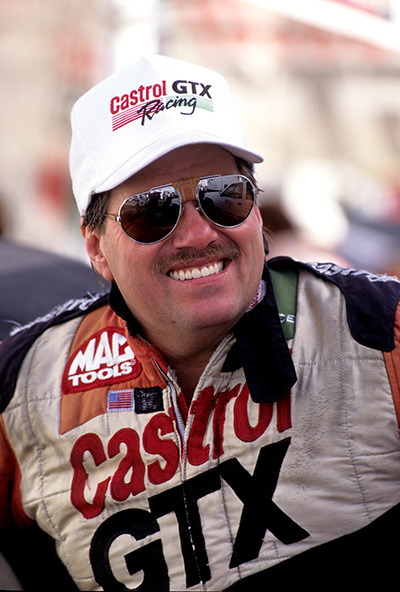
Force’s journey is truly the American dream rags to riches story. He was a truck driver before making the switch to drag racing in 1971, driving the ex-Jack Chrisman rear-engine Mustang Funny Car. In the beginning, he struggled financially and professionally. His belief that one day he would be champion was a view not shared by others in the sport at the time. This could have been due to the fact that in John’s first 10 seasons in drag racing competition, he did not have any wins, only made nine final-round appearances, and was on fire quite a bit. Force got his first victory at the age of 38 in 1987 at the Grandnational in Montreal with Austin Coil as his crew chief. That was the turning point in his career. From 1987-2006, he won 125 national events and 14 world championships. He won his next world championship in 2010, becoming the oldest driver in the sport to win a championship. He won his 16th championship in 2013. After several terrible accidents involving both himself and fellow drivers, Force worked with a team to develop safety improvements that earned him the 2008 MSEC Motorsports Achievement Award by the SAE (Society of Automotive Engineers) for his work in improving race car safety. He also started John Force Racing, which is not just a racing team but also a machine shop for parts, fabrications and paint shop, chassis shop, decal shop, and a museum housing historic racecars. Force was the first drag racer to earn Driver of the Year recognition for all American Motor Racing (1996); being voted No. 2 racer behind only Don Garlits in the NHRA’s first 50 years; and being inducted into the Motorsports Hall of Fame of America in Daytona Beach, Fla. (2008), the Texas Motorsports Hall of Fame in Fort Worth (2011), the International Motorsports Hall of Fame in Talladega, Ala., (2012), the California Sports Hall of Fame in Alta Loma (2017), and the National Motorsports Press Association Hall of Fame (2019).
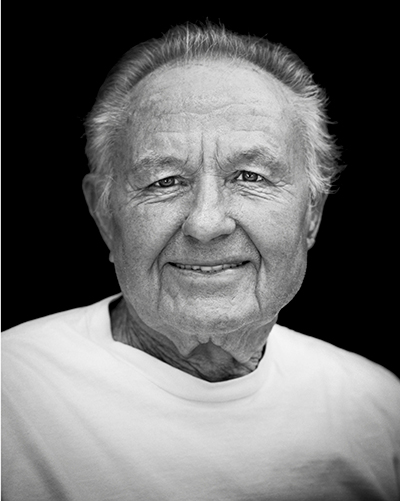
Messner, born in Los Angeles on, Aug. 1, 1941, as Herman R. Messner, would soon go by the nickname, “Sonny.” At the age of 15, he began his career in automobiles, working for Jr. Thompson, building racecars. He would accompany Jr. to all the Southern California drag strips, including famed Lions at Long Beach, and of course the Half Mile Drag Strip in Riverside, Calif. It was at the Riverside Drag Strip where he met Don Garlits. The strip was holding the Drag News Invitational in 1961, and Messner approached the Garlits-Swingle team and wanted to help. As it was in those days, that is how a two-man team got help, from fans and mechanics walking around in the pits. The team won the event, and this started a lifelong friendship, with Sonny traveling all around the West Coast and as far East as Florida to help the Garlits team win many races. When the Garlits team was in California, they could always be found at Messner’s home in Santa Ana, pitted on his front lawn and the street repairing the Swamp Rat for the next event. Any other time, Messner could be seen almost every week at the races helping some team try to win the Top Eliminator prize. He personally recreated the famed Jr. Thompson A/Gas, 1940 Studebaker sedan in 1960 for Thompson, and it was correct in every detail. He also located many of the cars in the Don Garlits Museum of Drag Racing that are on display today. Garlits went through many Swamp Rats over the years, but none captivated Messner’s interest as much as the Swamp Rat III that won the Riverside event in 1961. When Garlits formed the Drag Racing Museum in 1976, the hunt for all the Swamp Rats began and Sonny was very instrumental in locating many of the “hard to find” parts necessary to restore the old cars. There were three SR-IIIs, and the one that won Riverside was the second. SR-IIIB was destroyed in traveling accident in Southern Georgia in late 1961 so Garlits decided to recreate the car. When Sonny found out, he wanted to be a part of the recreation, so a plan was worked out; Sonny would pay for all the materials and parts. In return, Sonny gets possession of the vehicle until his demise, at which point the car will return to the museum for future fans to enjoy. In the meantime, Sonny would have the car as if it were his very own. Sonny attends all of the California Drag Racing Nostalgia functions and keeps the Dragster in top running condition. Sonny is a wonderful ambassador for the Sport and the Drag Racing Museum. It is as though we had a full-time representative on the West Coast. Sonny has lived his entire adult life dedicated to the sport of Drag Racing. On top of all he has done for Drag Racing, Sonny is one of the nicest people you will ever meet.
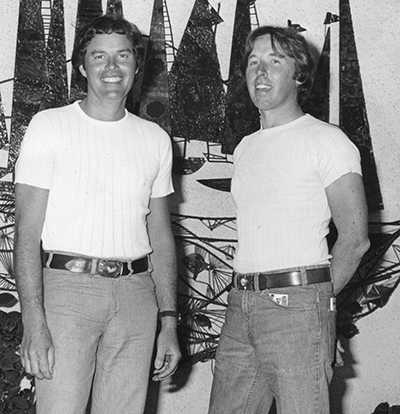
The Napp brothers were involved in drag racing at an early age. They often could be found racing their hot rods on the front stretch of the Old Bridge Speedway, which was the closest legal place to race at the time. The Napp family began looking for land to build a drag strip along the Golden State Parkway but it was outside their price range. Already racing in Old Bridge, the brothers began looking for land in the area, as the town was receptive to a drag strip and had existing ordinances for building and operating race tracks. In 1962 the family bought 308 acres of wooded land. In 1965, Raceway Park opened and would be forever linked to the Old Bridge Township. On its opening day, Raceway Park had 172 cars show up to compete. It took all day to run all the cars down the drag strip. It took some time for the track to find its groove, but it did with the help of the muscle car guys from across New Jersey who came to race. The track also brought in racers, not just those in New Jersey, from New York and Philadelphia. The track caught the attention of NHRA, which held the Springnationals at Raceway Park in 1968. Impressed with the facility, NHRA awarded Raceway Park its own yearly event in 1971 with the Summernationals. Over 85,000 fans jammed Raceway Park for that first NHRA Summernationals. The Summernationlas grew in popularity with the racers and fans due to the cooler springtime weather. What made Raceway Park great was the off-season nitro match racing during the 70’s, which they would hold throughout the year. Raceway Park had no problem booking a 32 Funny Car field, including hometown hero Jungle Jim Liberman. Raceway Park launched the careers of several drag racers and was home to some of drag racing’s most memorable moments, including the famed Don Garlits SR30 blow over in 1986. Raceway Park was considered one of the premier tracks because Vinny and Richard constantly maintained and made upgrades to the facility. Drag racing at Raceway Park ceased in 2018 after 53 years of exciting professional and amateur drag racing. Vinny Napp passed away in September 2000 and Richard Napp died in December 2001.
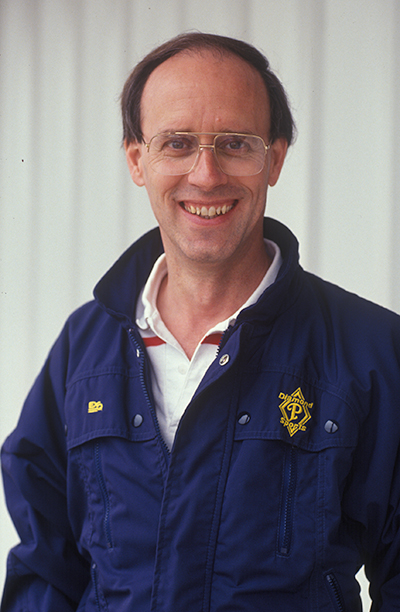
Founder’s Award: Bob Frey. Like most young men in the ‘60s, Frey wanted to go drag racing. In 1965, he did have the opportunity to do some drag racing and won in E/Stock Automatic at Vineland Speedway Drag Strip. In 1966 while at Atco, Bob learned they were looking for a track announcer. He took a chance and applied for the job and got it. From that day on, he spent the next 46 years calling drag races all over the United States and in Canada, Mexica, Puerto Rico, and England. Frey brought a new dimension to the sport of drag racing, not only at the tracks but in broadcasting. With his casual manner, he strived to not just inform but also entertain not only hardcore drag racing fans but those new to the sport. He did this by educating and telling great stories about the sport. Bob’s style got the attention of the NHRA, which offered him the job of being the NHRA announcer for all national events. Bob accepted the job and was with NHRA from 1985-2012. Frey would become known as “the voice of drag racing” and was the only announcer to work in all the drag racing sanctioning bodies: NHRA, AHRA and IHRA. Frey’s decades of involvement with the sport has also made him one of the most respected authorities on the history of drag racing. Due to his wealth of knowledge, he has written columns in National Dragster and on DragRaceCentral.com. His knowledge also made him an excellent choice to be the emcee for the annual International Drag Racing Hall of Fame Induction Ceremony and he graciously volunteered his services to the IDRHoF for 15 years, providing his knowledge, entertainment, and drag racing jokes as only Bob Frey could do.

Pat Garlits Memorial Award: Linda Jones. At the age of 19, Linda married Ted Jones, who was a drag racer and had a dream of owning his local dragstrip in Kettlersville, Ohio. The young couple had no money or assets, only the desire to be more involved in the sport they loved. Ted was able to talk the track owner into selling Kettlersville Drag Strip, agreeing to make monthly payments. But the owner wanted a big down payment, which Ted did not have. After trying everything possible to borrow the down payment without success, Ted was depressed and ready to give up his dream of owning and operating a drag strip. Then one day when Ted returned home from his job at WERT radio station and Linda told him that she had secured the money for the down payment to buy the track by borrowing the money from her mother, and the rest is history. Ted and Linda in all would own four drag strips, including one they build from the ground up in Van Wert Ohio. Linda did everything from running the pit gate to managing the concession stands, and handling racer complaints in the bottom of the tower where she managed prize money payout. Ted and Linda sold their four drag strips and move to Bristol, Tenn., to work with Larry Carrier and the newly formed IHRA. During her years at IHRA, before the invention of the Compulink computer system, Linda supervised a crew of five women and invented a system to accurately keep track of qualifying, and eliminations in the timing tower at all IHRA national events. Then after the race, Linda would work with the track operator to financially settle up the event representing IHRA. This led to Linda becoming the CFO of not only the IHRA, but the Bristol Dragway and Bristol NASCAR track as well. Then when IHRA lost the editor of Drag Review Magazine, Larry Carrier asked Linda to work overtime as editor of Drag Review until someone could be hired to do that job while still keeping up with her duties as the CFO of IHRA. When Billy Meyer bought the IHRA from Larry Carrier, Ted and Linda left the IHRA for one year. Then Ted and Jim Ruth purchased the IHRA and of course Linda took over again as CFO and returned to her duties managing the tower crew at every event. Linda wrote all of the radio and TV commercials for IHRA for many years and won a prestigious National ADDY award for her originality creating the IHRA commercials. Ted then started Masters Entertainment Group. Through the years at Masters, Linda took on numerous duties including Assistant Director, Field Producer, and Production Assistant on televised events on ESPN and many other TV networks. Linda now is the CFO at Masters Entertainment Group. Linda Jones has truly made a behind the scenes contribution to the sport of drag racing, but more importantly has been at Ted’s side through it all.
The inductees will be honored at the 33rd annual International Drag Racing Hall of Fame Banquet, to be held on Thursday, March 9, at the Hilton University of Florida Conference Center in Gainesville, Fla. NHRA announcer Joe Castello will serve as the emcee. The event will begin with a reception at 5:30 p.m., followed by dinner at 6:45 p.m. and the induction ceremony at 8 p.m. Masters Entertainment will live stream the event. Tickets ($110) and Tables ($1,100) are available for purchase by calling the museum.























